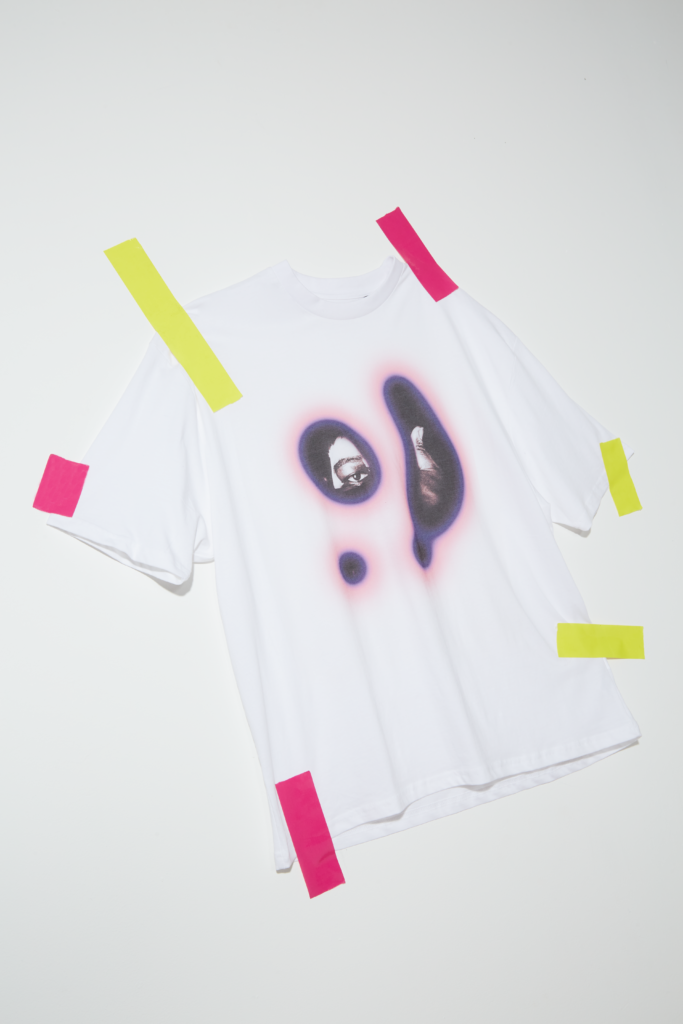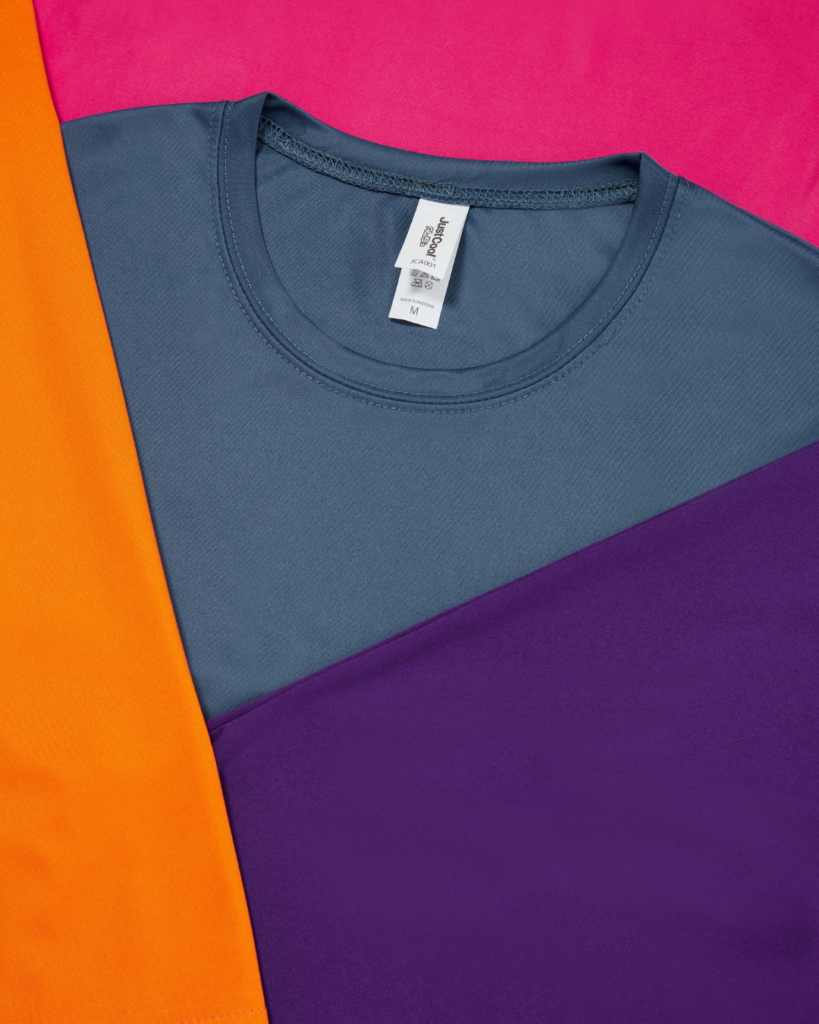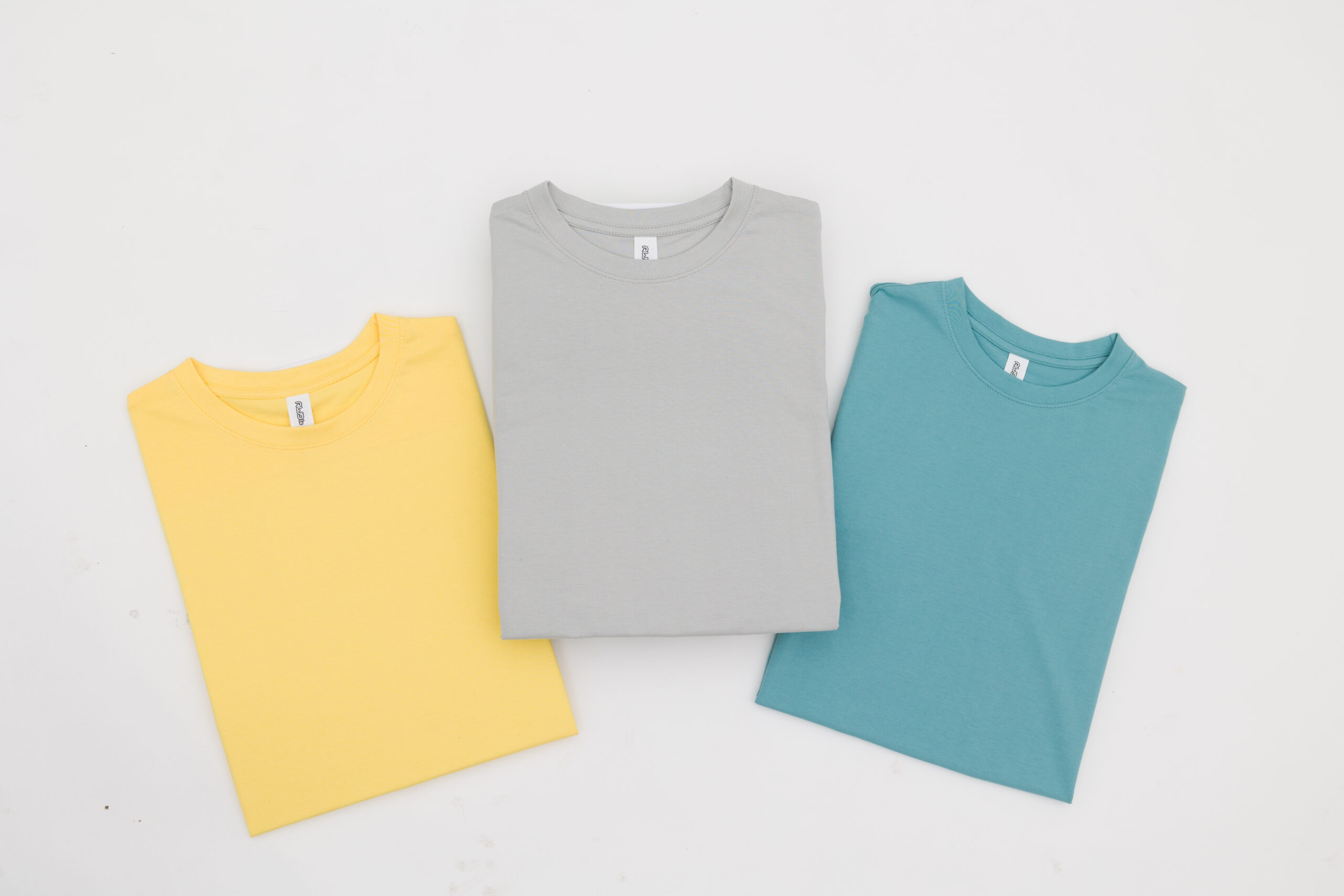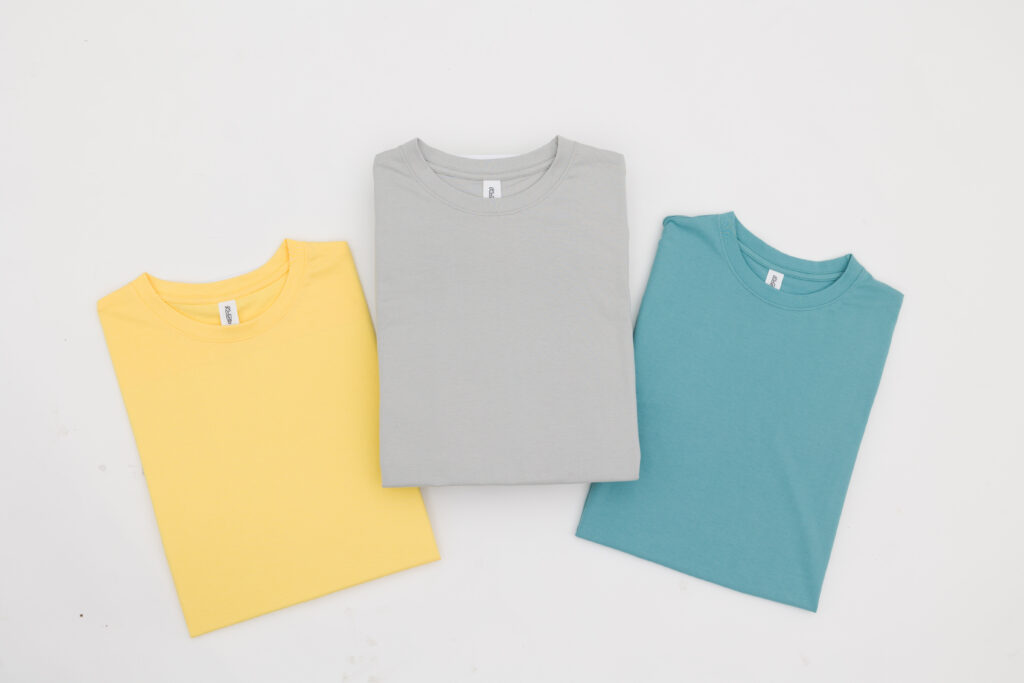Whether you’re creating your own custom apparel or starting a business, it can be difficult to know where to begin when printing T-shirts. This guide will walk you through the various methods of T-shirt printing, the materials you’ll need and key considerations to ensure high-quality results.

- CHOOSING A PRINTING METHOD
Choosing the right printing method is crucial to achieving high quality designs on your T-shirts, but with so many methods out there….
Direct to Film (DTF) – a versatile and quality method that involves printing a design onto special film and then using a heat press to transfer it onto the garment. Works well on a wide range of fabrics including polyester, cotton and nylon/ other synthetic blends.
Screen Printing – a traditional method that uses a screen stencil to apply an ink design onto fabric. Produces vibrant long-lasting prints, but ink absorption can vary between fabrics.
Sublimation – uses heat to transfer dye onto fabrics, creating bright and vibrant designs. Produces photo quality images but limited to white or lighter coloured fabrics.
Embroidery – a classic method that involves stitching a design directly onto a garment using thread. Produces durable, premium designs ideal for logos and badges.
Transfer – involves printing a design onto paper and then using heat and pressure to apply it to the garment. A versatile method that can be used for a variety of fabrics.
2. CHOOSING THE RIGHT MATERIALS
Now that you have an idea of the different types of printing methods, it’s time to choose the right materials.
FABRICS:
- Cotton – Best for screen printing and DTG.
- Polyester – Best for sublimation printing.
- Blends – Can work for multiple methods but may affect print durability.
INKS/MATERIALS:
- Plastisol Ink – Used in screen printing for bright and long-lasting results.
- Water-based Ink – More eco-friendly, gives a softer feel.
- Heat Press – Needed for heat transfer, sublimation and curing DTG prints.
- Printer – Inkjet or laser printer for heat transfer, specialized printer for DTG or sublimation.
3. DESIGN PREPARATION
For the ultimate high quality printed t-shirt, design prep is key! Ensure you consider the following for the best results.
- Use high-resolution images (300 DPI) to ensure sharp prints.
- Design in CMYK color mode for accurate color representation.
- Convert text to outlines in vector software to avoid font issues.

4. PRINTING PROCESS
Pre-Treatment (For DTG and some Screen Printing)
Wash and dry the T-shirt to remove residues.
Apply pre-treatment solution if required, allowing the t-shirt to fully dry before printing.
Printing the Design
Follow the specific process for your chosen method. A good tip is to practice beforehand on scrap fabric to test color accuracy and design placement.
Curing the Print
Heat set the ink using a heat press or dryer to ensure durability.
Follow manufacturer instructions for temperature and timing.
5. ENJOY YOUR UNIQUE, HIGH-QUALITY CREATION!

Print Guide
Discover valuable insights and top tips in our online Print Guides.


